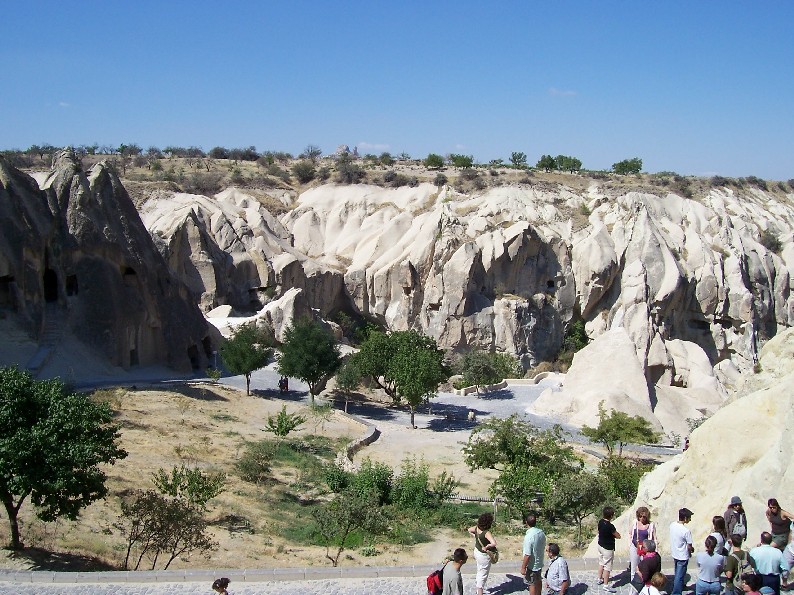
A few kilometers down the road from Goreme city proper is the world-renown Goreme Open Air Museum. Part rock theme park, part dangerous walking tour, and part archeological exhibition, the Open Air Museum is well worth the trip. Walking paths gently herd the throngs of tourists around the major sights, but unlike other countries, Turkey doesn't mind wandering. They don't see much of a reason for handrails, either...if you fall and hurt yourself, you shouldn't have been doing anything stupid. No greedy lawyers...yet another reason that I like Turkey.

There is a lot to see, and yes, the doors are as short as they look. I spend a lot of time..ducking... Visitors are free to wander about, poking their noses into all the different (small) churches, and making up their own stories about the different chambers to supplement the rather sketchy descriptions posted on some (but by no means all) of the rooms.
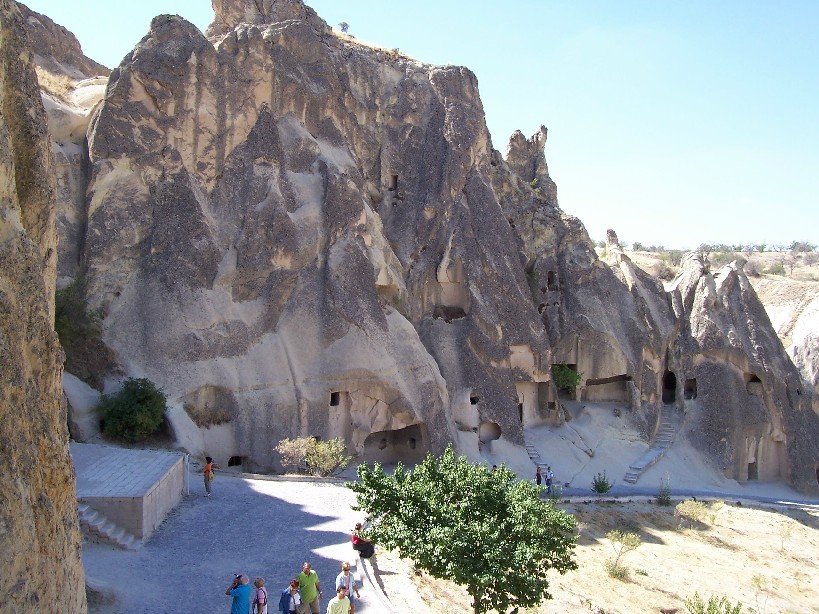
You can still see traces of thousand year old paint in places that don't get direct sunlight.
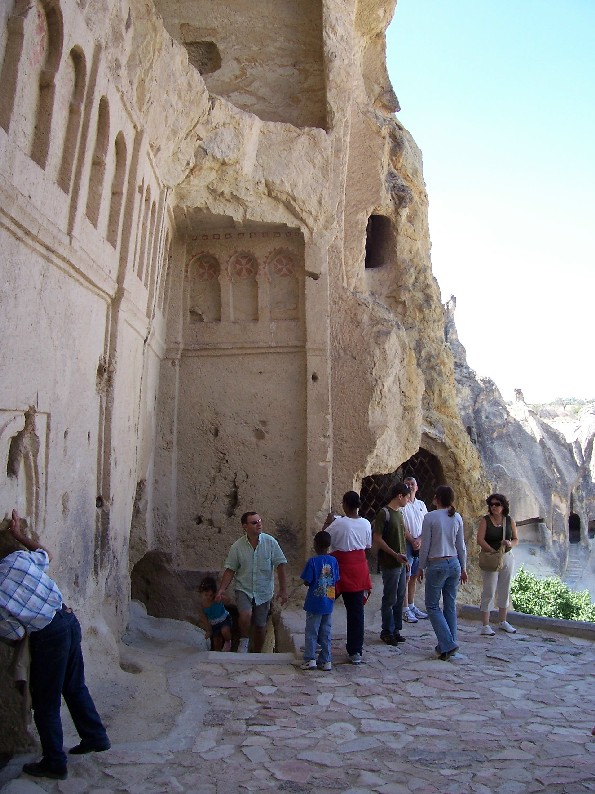
Visitors so inclined (no pun intended, although I wish I had thought of it) can climb all over; this is a jungle gym for people with decent balance and strong legs.
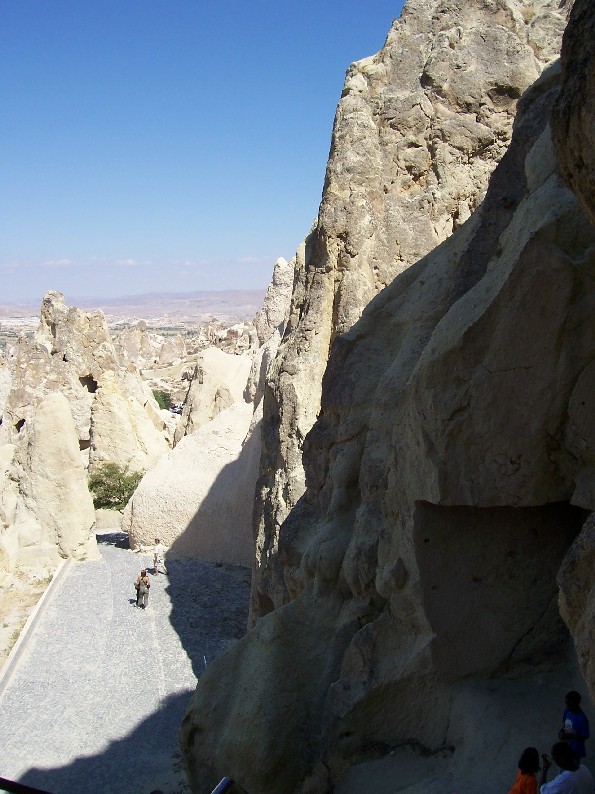
The rock stairs are not just steep, but uneven. These had a handrail, which was so unusual that I was forced to take a picture.
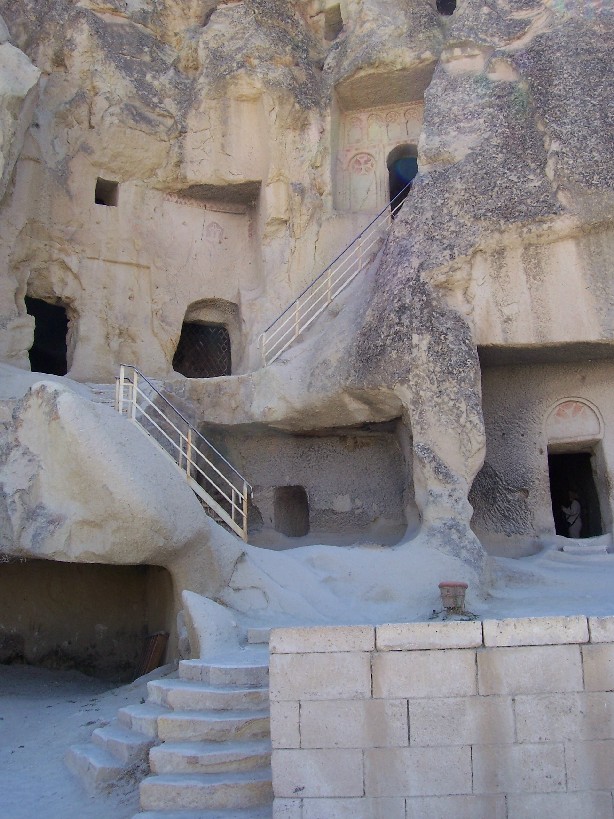
The same stairs from the top:
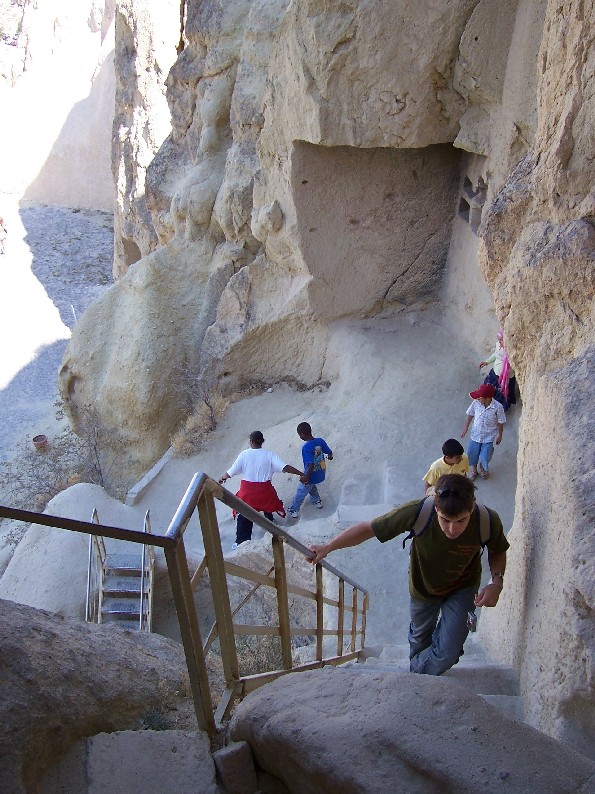
Another shot of the same structure, with some people in the picture to show scale:
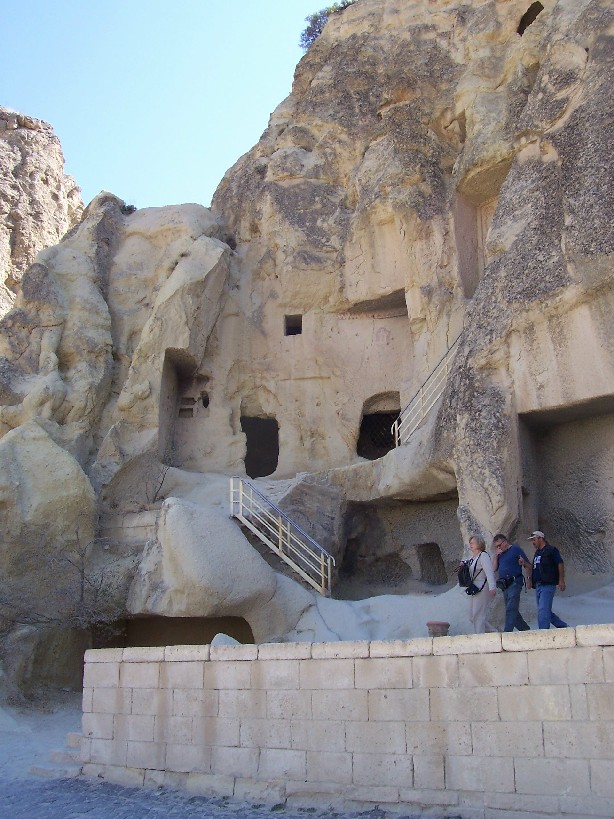
Some of the rooms are not accessible without a ladder. Note to self:
bring ladder next time...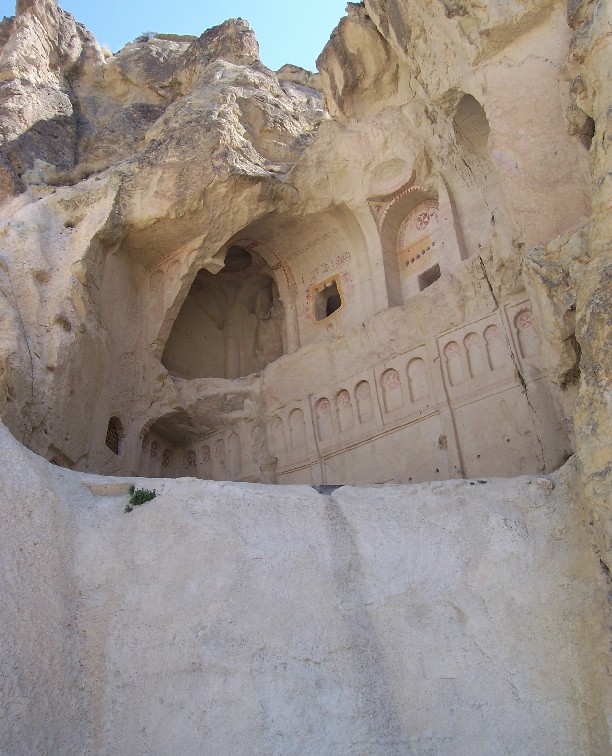
Looking back down the valley toward Goreme city:
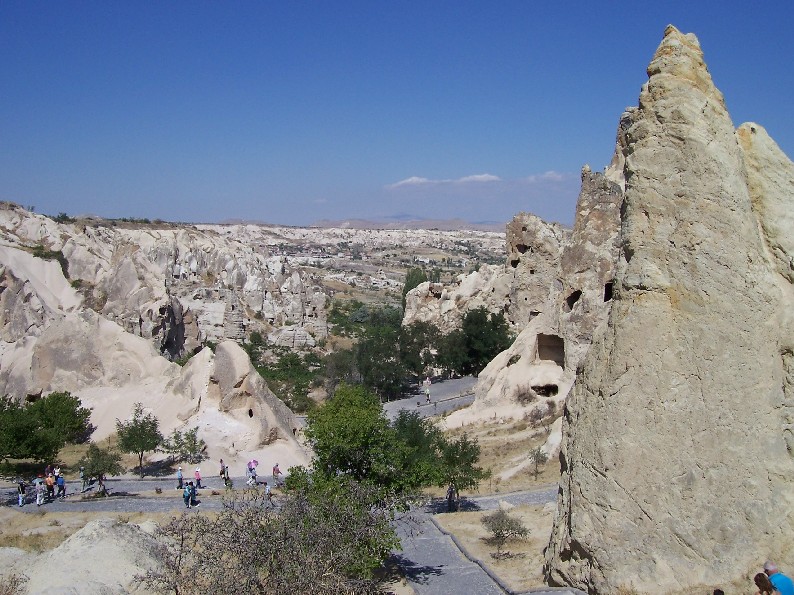
Sometimes a tall ladder is not enough...
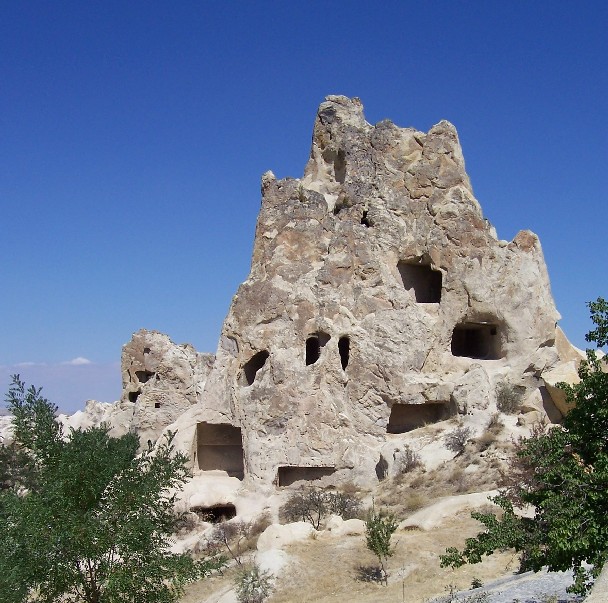
Here is one of the smaller churches that is actually closed off. They are still doing some excavation.
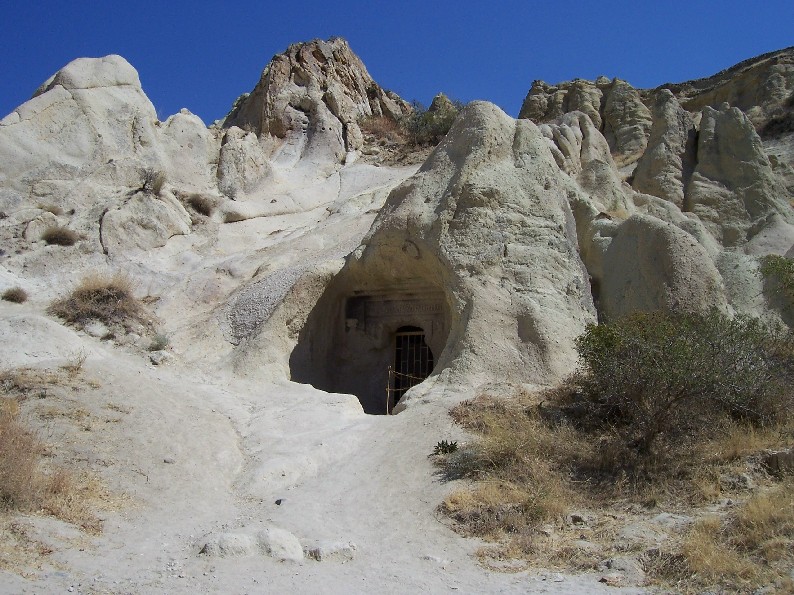
One of the original occupants of that closed church is still taking visitors:
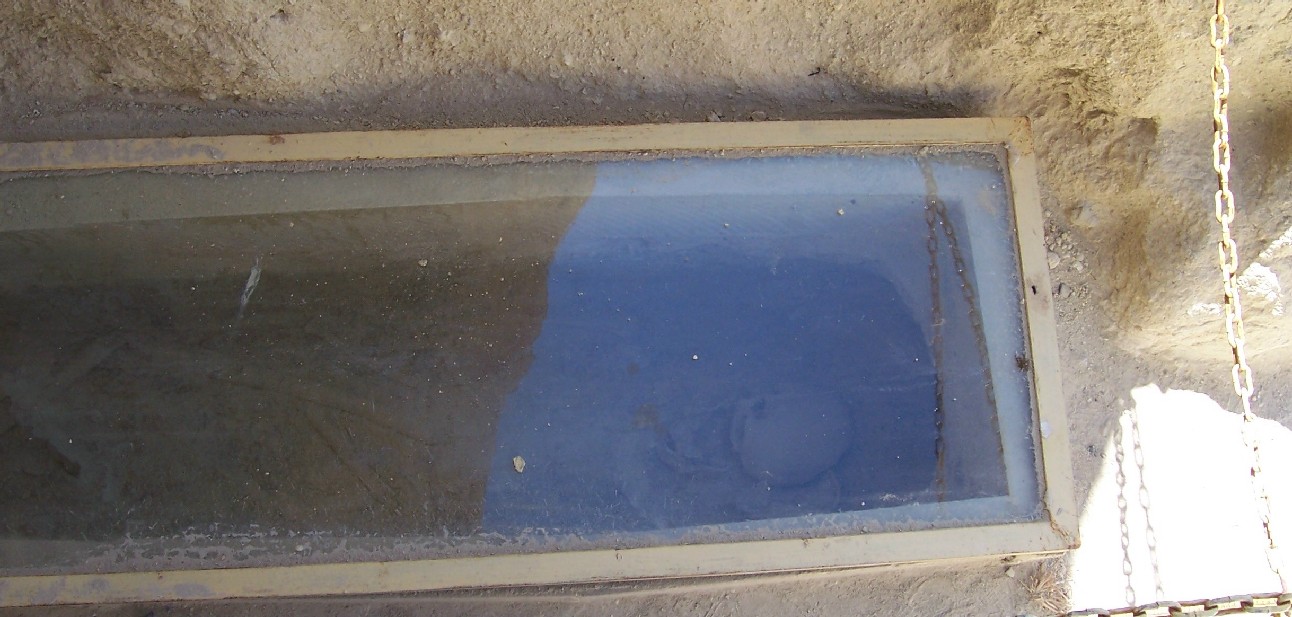
Not much of a talkative sort, but still interesting:
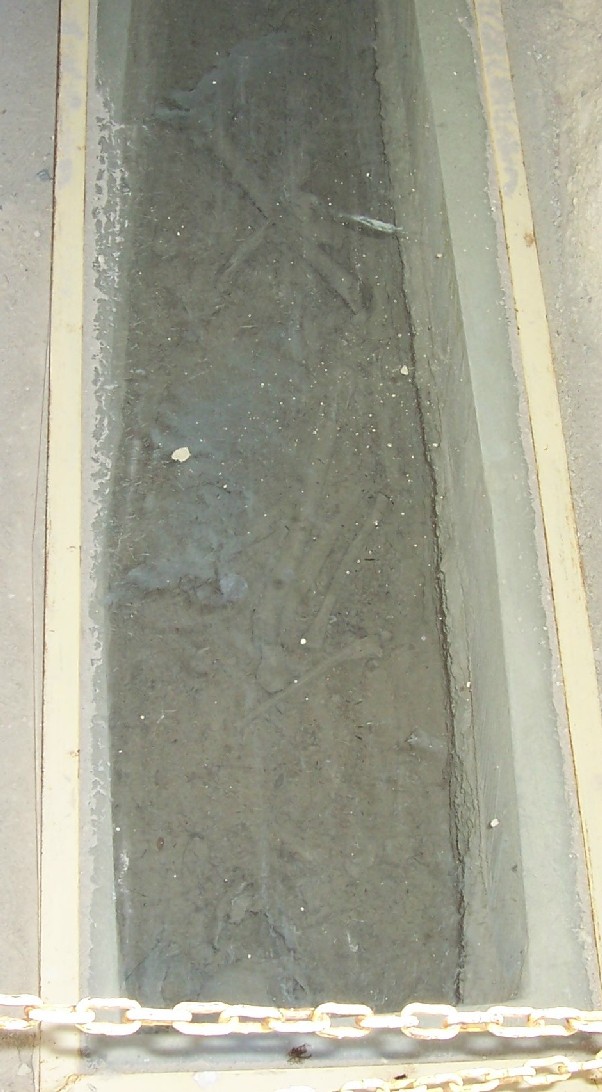
The churches are small because when the valley was being run by the sort of proto-Christians in the fourth and fifth centuries, they followed the doctrine that a church should be between 10 and 20 people, more or less, and so kept the churches themselves rather small. The easily accessible churches have been extensively defaced by the Muslims (Seljuk Turks, and later the Ottoman Empire) that took over after the Christians left; the paintings on the walls had the heads scratched off, or the entire sets of paintings removed. There is one church, high up in the rock face, called the Dark Church, that was covered by a landslide and buried for most of the "defacing" period of the Muslim control. The paintings are primitive, but very impressive nevertheless. Unfortunately, no pictures are allowed inside, as so not to damage the pigments.
Why did the early Musselmen (to quote the writers of the day) deface the Christian paintings? They believed that only Allah could create, and so anyone who painted a picture of a living thing would be brought before Allah in the afterlife and ordered to make the painting live. Since only Allah could do that, thus anyone who painted a living thing would be cast down into the pits of fire that burned but did not consume. THAT would teach them! So, the Muslims cut the heads off Roman statues, destroyed paintings...this is still going on, under the fundamentalist Islamic regimes. The Taliban in Afghanistan destroyed thousand year old Buddhist statues, the Wahabbi sect in Saudi Arabia are destroying the Prophet Mohammad's Mother's house (she is a person of veneration in "other than Wahabbi" sects of Islam)...ah, well.
And on that depressing note, here is one more picture: a fat American about to jump off a cliff:
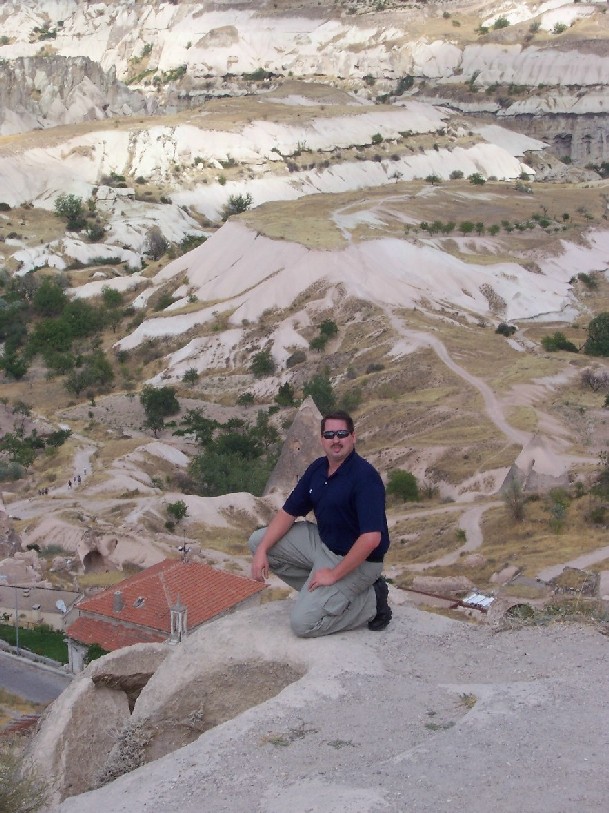
And that is the end of this section!